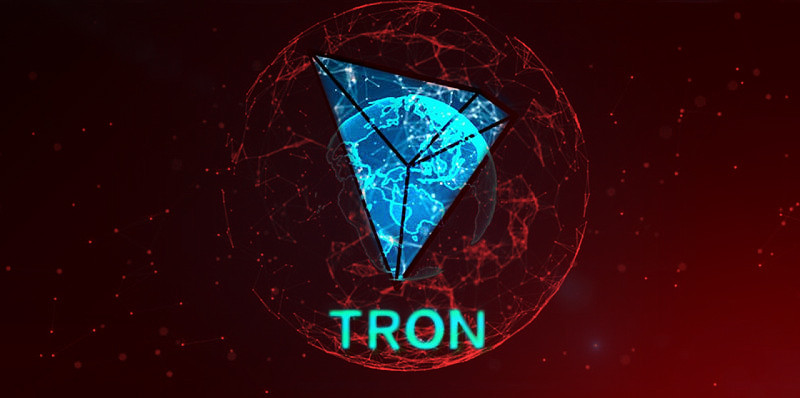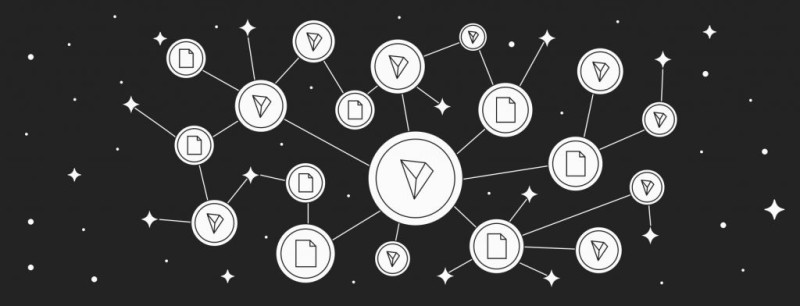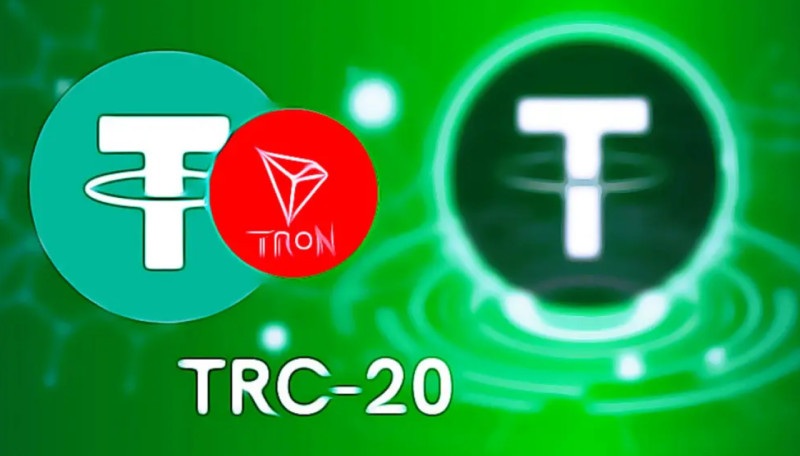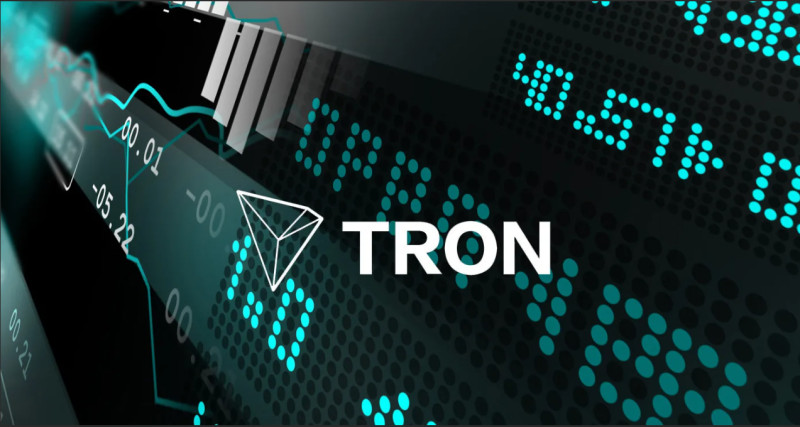
Tron is one of the most controversial projects in the crypto world. Some view it as a serious competitor to other cryptocurrencies, while others consider it a short-lived startup.
Tron was designed as an alternative to the monopolistic digital giants that quietly dominate the entire crypto industry.
The Tron project and its native cryptocurrency Tronix (TRX) created a fundamentally new environment for digital content exchange between its creators. Tron operates on decentralized software with open-source code. Its blockchain technology and P2P network enable direct communication between content creators and users.
In this article, we will discuss the Tron project, its origin, how it differs from similar projects, and what TRX cryptocurrency is, as well as delve into its technical features and prospects. We will also explore the key blockchain standards of TRON.
History of TRON

In our century, money has undergone several transformations:
- Initially, it was only cash, and then electronic money appeared (stored on plastic cards).
- Later, electronic money evolved into digital currencies or cryptocurrencies.
Today, you can use both cash and electronic money; both forms coexist in society. In some countries, payments for goods and services with cryptocurrencies are already allowed, while in others, this practice is slowly being adopted. However, in most countries, cryptocurrencies are not yet recognized as a legal form of payment, making their use illegal in those places.
Many countries and companies are introducing their own cryptocurrencies. As of now, there are over 2,000 types of digital currencies globally, with new ones appearing daily. However, among this diversity, the most valuable cryptocurrencies number fewer than 50, with the main ones being just 15.
Cryptocurrencies are stored and transferred through blockchain technology. Wallets are used to store, send, and receive them. The first blockchain technology was introduced by Bitcoin, followed by Ethereum.
TRON’s blockchain started as a token on the Ethereum blockchain, but its rapid growth led it to become a fork—a separate cryptocurrency with its own blockchain and ecosystem.
Simply put, blockchain is like an open ledger that cannot be falsified. It is open because anyone with a wallet address can see the balance and transactions of that wallet, whether incoming or outgoing.
The technology is also anonymous because the owner’s name is not recorded or stored anywhere. Unless the owner discloses their wallet address, no one can ever know who owns it.
TRON's platform was founded in 2017 by young Chinese entrepreneur Justin Sun. His goal was to create a decentralized platform where developers could build entertainment-focused decentralized applications (DApps). It was also important for them to distribute files directly to users without intermediaries like Google Play or Apple Store.
In the beginning, TRON cryptocurrency functioned solely as an Ethereum-based token.
Sun brought in top programmers and marketers to build a unique platform and planned an initial coin offering (ICO).
Through the non-profit organization Tron Foundation, Sun raised 15,000 bitcoins during the ICO to support the project.
The ICO became one of the most significant events in the crypto world, further boosting the popularity of digital currencies. A total of 100 billion TRX were issued, with 40 billion sold to investors during the initial coin offering.
In 2017, the Tron Foundation raised $70 million during the ICO, just before China banned cryptocurrencies within its territory. Justin Sun's team managed to gather this impressive sum with little more than a landing page and incomplete documentation. In fact, many sections of the White Paper were copied from other companies, and when pointed out, the team blamed it on poor translation.
In 2018, the TRON network finally transitioned from Ethereum’s blockchain to its own platform using the Proof-of-Stake algorithm and Validation consensus. TRON became one of the first platforms to achieve this.
Later, Sun announced the acquisition of BitTorrent, the most popular file-sharing system at the time.
Prior to founding the Tron Foundation in 2017, Justin Sun worked at Ripple, which created the cryptocurrency XRP. Sun was also twice listed among Forbes Asia's "30 Under 30" most successful entrepreneurs.
The TRON protocol allows developers to create smart contracts and decentralized applications (DApps), offering free publication, ownership, and storage of data.
The ecosystem provides vast scalability and reliability, enabling the processing of transactions at very high speeds.
Decentralized social network

The TRON blockchain is a decentralized ecosystem primarily focused on entertainment content. The project's creator intended for developers to create their own entertainment applications (dApps) on the platform and sell them directly to users without involving intermediaries.
From the start, TRON was positioned as a new kind of social network without centralized control. In other words, anyone could create content and share it with the virtual community, with no censorship imposed on what is posted.
TRON serves as both a platform for discovering decentralized applications on DappRadar and a cryptocurrency wallet.
With this platform, content creators retain full control over their data and can earn revenue for their efforts.
TRON's vision is to revolutionize the traditional media industry by decentralizing it, removing central control.
For example, platforms like Facebook and YouTube currently manage and monetize the content published on their networks, taking a large share of the profit while content creators receive only a fraction.
TRON completed its decentralization process in December 2021, and it is now fully governed by the DAO community.
The project’s blockchain operates and evolves with the help of the Tron Foundation, which allocates all profits towards the development of the TRON network. Now, let us dive into the details of TRX cryptocurrency.
Technical features of TRONIX

TRONIX (TRX) is the digital coin of the TRON project. To understand TRX, it is important to look at its key features.
TRX is built on a blockchain with a wide interface and offers high scalability, allowing applications to be implemented in various ways. The network interacts with a vast number of different devices, making TRX highly accessible.
The cryptocurrency benefits from a stable foundational network that supports distribution and boasts a high transaction throughput.
For instance, TRON’s transaction speeds far exceed those of Bitcoin or Ethereum. TRX transfers can take as little as 3 seconds, while Ethereum can take around 4 hours and Bitcoin even several days. Moreover, TRX has notably low fees.
The main goal of TRON is to eliminate the high transaction fees typical of Ethereum’s blockchain. TRON’s creators saw an opportunity to enhance the platform’s technological level and make it more appealing in the digital space.
On TRON’s network, users can make transactions without worrying about gas fees. The system allows for 15 free transfers before fees are applied, which vary depending on the bandwidth used by each operation.
This absence of high fees creates a perfect foundation for developing decentralized applications.
TRON enables full decentralization of software, with TRX serving as the core for applications created on the platform.
The total supply of TRX is limited to 100 billion coins, and as of August 2021, 71 billion were in circulation. TRX does not support mining due to its consensus algorithm, Delegated Proof-of-Stake (DPoS).
However, Justin Sun mentioned that once the TRON project and its cryptocurrency gain more popularity, he might reconsider the introduction of mining.
By August 2021, over 500 projects had already been launched on the TRON platform, including games, social services, cryptocurrency exchanges, and DeFi platforms. The project’s success depends largely on its adoption by developers and users.
Additionally, TRX holders who engage in staking help maintain the project’s liquidity.
One of TRON's key advantages is its support for content creators. TRON provides authors with ownership rights to their creations, which are stored and tracked on the blockchain.
Content creators can see how their content is used within the network and know exactly how much they will be rewarded, without intermediaries taking a cut.
Unlike platforms like YouTube, which has a centralized authority to censor content and control the use of its platform, TRON’s blockchain-based services are managed either automatically or by the community.
Imagine a version of YouTube without centralized control—where every user has a copy of the source code and ownership rights proportional to their token holdings. In such a scenario, users themselves would decide what to publish and how much content to share.
TRX cryptocurrency is the central asset of the TRON network. It can be used as a medium for exchanging other assets or for paying transaction fees within the network.
Unlike Bitcoin, which does not yet have a token-burning mechanism, TRON burns some of its coins whenever a new dApp is created on the blockchain. This ensures that the value of TRX does not decrease over time.
Anyone can acquire TRX by exchanging cryptocurrency or fiat funds for coins on various online services. TRX is widely available on cryptocurrency exchanges and can be traded on platforms like Huobi Global, Binance, and Poloniex. In 2021, daily TRX trading volumes reached $1.17 billion.
TRX can also be converted in online exchanges, often without registration or user authentication, though these services may offer less favorable rates than exchanges.
TRX continues to be traded on all major cryptocurrency exchanges, similar to Bitcoin and Ethereum.
Key TRC token standards

For businesses, developing cryptocurrency based on TRX is an essential step toward generating substantial profits. Using network tokens, content creators can issue their digital coins and earn rewards for their publications.
The TRON blockchain includes specific TRC token standards that organize the operation of the entire decentralized application system through smart contracts.
Key TRC token standards:
- TRC-10: This is the most refined token standard, enabling blockchain transactions at a reduced cost without using the TRON Virtual Machine (TVM).
- TRC-20: A more advanced version of TRC-10. This standard supports transactions of fungible tokens. While its functionality is similar to TRC-10, TRC-20 connects to the TRON Virtual Machine, making it compatible with Ethereum’s ERC-20.
- TRC-721: This standard is designed for issuing non-fungible tokens (NFTs).
Which tokens operate under the TRC-20 standard?
The TRC-20 token standard is widely used within the TRON blockchain, supported by major cryptocurrency exchanges and wallets. Below, there are some of the most popular tokens that utilize this standard:
TRONIX (TRX) is TRON's native token. As of August 2, 2022, TRX ranked 17th among major cryptocurrencies with a market capitalization of $6.3 billion.
USDT (Tether) is the largest stablecoin by market cap, pegged to the US dollar. Although issued by Tether, USDT operates on several blockchains, including TRON. By 2021, USDT transactions on TRON had surpassed those on Ethereum. One of TRON's main advantages is its low transaction fees, with TRC-20 USDT conversions costing around $1, whereas ERC-20 fees can range from $2 to hundreds of dollars when the network is congested.
USD Coin (USDC) is another stablecoin pegged to the US dollar that operates on the TRC-20 standard. Launched in June 2021, it quickly gained traction, with transactions exceeding $200 million within just a few months.
BTT (BitTorrent) supports decentralized applications (dApps) like BitTorrent Speed and the BitTorrent file system. It operates on TRC-20 and integrates closely with the TRON ecosystem.
APENFT (NFT) is the official governance token of the APENFT marketplace. APENFT is part of the TRON ecosystem and operates within the BitTorrent network. This token certifies users' ownership of NFTs and grants them voting rights, revenue sharing, and participation in airdrops.
USDD is an algorithmic stablecoin launched by TRON in spring 2022. USDD is backed by assets like TRX, BTC, USDT, and USDC, with collateralization exceeding 318%.
The TRC standards facilitate the creation of a decentralized economy, enabling secure and efficient token transactions across a wide range of digital assets and applications.
Who uses TRON?
Here are some companies and services that rely on the TRON network and the TRX cryptocurrency in their operations.
Refereum is a referral platform for gamers and streamers. As of today, it has gathered over 10,000 gamers who earn money by playing video games. Players and streamers earn TRX for points in games, while viewers earn rewards for watching.
The driving force behind this is DLive, a streaming service that joined the ecosystem of the leading torrent client, BitTorrent. Thanks to this partnership, DLive enables high-quality content sharing among users, including live streaming. Additionally, DLive can promote its services on BitTorrent, which has over 100 million users.
Another service utilizing TRON's blockchain is Metal Pay, a global online payment platform. Users can easily purchase TRX coins with cash through this service.
Samsung has also integrated TRON into its blockchain key store. Now, users of new Samsung smartphones can access TRON DApps through the Samsung Galaxy Store.
TRX price history and prospects

TRX hit its all-time high of $0.3004 on January 5, 2018, during a market-wide crypto boom. However, by February, mass sell-offs across the crypto market dropped the price to $0.02511.
Another spike occurred in late April 2018, when TRX reached $0.1012, but enthusiasm was short-lived, and the price fell again to around $0.02–$0.03. After a long period of stability, TRX saw renewed momentum in early 2021. In April 2021, the price reached $0.0492, but by mid-summer, it dropped to a low of $0.04917.
In November 2021, the price surged to $0.1291, only to fall again. By the end of 2021, TRX was trading at $0.0754, and at the start of 2022, it dipped to $0.05134. The trend then reversed, and by April 4, 2022, the price rose to $0.0749, reaching $0.08755 by May 8.
As of January 9, 2024, TRX was trading at $0.10370448 and ranked 12th in the entire cryptocurrency system. The total circulating volume was $9,101,337,972.60, with a market capitalization of 88,278,610,864 TRX.
TRON’s total supply is capped at 100 billion coins, and the average transaction takes less than one minute to process. Considering these factors, TRX is seen as a promising asset. It is clear that TRX plays a vital role in the TRON network, supporting the operations of other coins based on this system. Most analysts agree that the token will remain in demand moving forward.
When writing the article, TRX was in an upward trend, increasing by 3.8% in a week. In 30 days, the asset rose by 3.95%, adding $0.0041. This sharp rise suggested that the cryptocurrency could have continued to stabilize as its value grew.









 Back to articles
Back to articles

